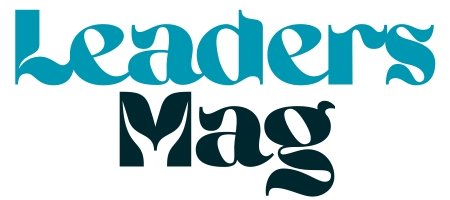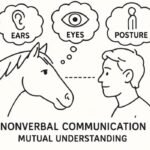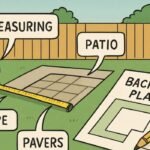Did you know that the average employee forgets 70% of new information within just 24 hours of traditional training? That staggering knowledge drain is exactly why the old ways of learning are crumbling. Enter WeLearn 2.0 – not just an upgrade, but a complete revolution in how we acquire, retain, and apply knowledge in the digital age. Forget dusty manuals and snooze-inducing lectures; this is about learning that sticks, adapts, and empowers. Ready to ditch the forgetting curve?
Understanding the WeLearn 2.0 Revolution
WeLearn 2.0 isn’t just a fancy new app or platform. It’s a fundamental shift in philosophy. Think of it as moving from a static library to a vibrant, interactive learning ecosystem. Where traditional learning was often top-down and one-size-fits-all, WeLearn 2.0 thrives on:
- Personalization: Content adapts to your pace, style, and goals. No more wading through irrelevant info!
- Collaboration: Learning becomes social. Share insights, debate ideas, and solve problems together – just like you would in the real world.
- Micro-Learning: Bite-sized chunks of knowledge delivered when and where you need them, perfect for our busy lives and short attention spans.
- Application-Focused: It’s not just about knowing; it’s about doing. Built-in practice, simulations, and real-world projects cement understanding.
- Data-Driven: Insights track your progress, highlight strengths, and pinpoint areas needing more focus, making learning truly efficient.
Imagine a system that learns with you, constantly refining its approach based on your interactions. That’s the core promise of WeLearn 2.0.
Your Step-by-Step Guide to Embracing WeLearn 2.0
Ready to transform how you or your team learns? Here’s how to get started:
- Audit Your Current State:
- Ask: What learning methods are we using now? (Lectures? LMS modules? PDFs?)
- Identify Pain Points: Where is knowledge dropping? Where is engagement low? What skills are consistently lacking?
- Define Goals: What specific outcomes do you want? (Faster onboarding? Higher sales conversion? Better problem-solving?)
- Explore WeLearn 2.0 Platforms & Tools:
- Look for features like adaptive learning paths, social forums, gamification elements (badges, leaderboards), micro-learning libraries, and robust analytics dashboards.
- Examples: Platforms like Degreed, EdCast, or even sophisticated features within modern LMSs like Moodle or Canvas embody WeLearn 2.0 principles. Companies like Siemens use AI-driven platforms to personalize technical training.
- Start Small & Pilot:
- Don’t try to overhaul everything overnight. Choose one team, one skill set, or one specific learning need.
- Implement your chosen WeLearn 2.0 approach for this pilot group.
- Key: Ensure the pilot focuses on solving a real, tangible problem identified in Step 1.
- Foster a Learning Culture:
- Encourage Sharing: Make it easy and rewarding for people to share resources, ask questions, and post insights. Think internal “knowledge cafes” or digital forums.
- Recognize & Reward: Celebrate learning milestones, application of new skills, and helpful contributions. Badges, shout-outs, or even small incentives work wonders.
- Lead by Example: Managers and leaders must visibly participate and champion the new learning approach.
- Measure, Analyze, Iterate:
- Go beyond simple completion rates. Track:
- Knowledge Retention: (Quizzes weeks later, application in projects)
- Skill Application: (Improved performance metrics, project outcomes)
- Engagement: (Time spent, contributions made, resource sharing)
- Business Impact: (Reduced errors, faster time-to-competency, increased innovation)
- Use the data! Tweak content, adjust paths, and double down on what works. *The chart below illustrates potential growth in key performance indicators (KPIs) like productivity and innovation after implementing WeLearn 2.0 principles over a 12-month period.*
- Go beyond simple completion rates. Track:
Common Mistakes to Avoid in Your Learning Transformation
Jumping into WeLearn 2.0 without strategy is a recipe for wasted effort. Steer clear of these pitfalls:
- Tech Overload: Don’t just throw shiny new tools at people. Focus on solving specific learning problems first, then find the tech that enables the solution.
- Ignoring Culture: If your environment punishes mistakes or discourages asking questions, even the best platform will fail. Culture eats strategy for breakfast, especially in learning.
- Forgetting the “We”: WeLearn 2.0 is inherently social. Neglecting collaboration features or failing to nurture communities turns it back into isolated e-learning 1.0.
- Lack of Leadership Buy-In: If leaders aren’t actively participating and advocating, enthusiasm will fizzle fast. Get them involved early and often.
- No Clear Metrics for Success: If you don’t know how to measure impact, you won’t know if it’s working. Define success metrics before you start the pilot. You might wonder if tracking all this is worth it – but without data, you’re just guessing at ROI.
Measuring Your Learning Transformation
How do you know WeLearn 2.0 is delivering? Look beyond the login counts:
- Performance Metrics: Are sales reps closing deals faster using new techniques? Are support agents resolving issues quicker? Are projects delivered with fewer errors?
- Innovation Indicators: Is there an increase in new ideas submitted? Are teams solving problems more creatively? Is cross-departmental collaboration happening more naturally?
- Engagement & Sentiment: Are employees actively participating in discussions and sharing resources? Do surveys show increased confidence in skills and career development?
- Time-to-Competency: How much faster are new hires becoming productive? How quickly are existing employees mastering new required skills?
- Knowledge Retention: Use spaced repetition quizzes or practical assessments weeks or months after learning to see if knowledge has truly stuck.
This data paints the real picture of whether your learning evolution is a success.
Next Steps: Unleash Your Learning Potential
WeLearn 2.0 isn’t a distant future; it’s the necessary present for individuals and organizations that want to thrive. It’s about making learning seamless, engaging, and relentlessly relevant. Here’s your action plan:
- Acknowledge the Shift: Recognize that old-school training simply isn’t cutting it anymore.
- Identify Your Pain Point: Pick one specific area where better learning could make a real difference right now.
- Explore One Solution: Research a single tool or approach embodying WeLearn 2.0 principles that addresses that pain point.
- Run a Micro-Pilot: Test it with a small, willing group. Focus on application and outcomes.
- Listen, Learn, Adapt: Gather feedback and data. Tweak and expand based on what works.
The future belongs to the agile learners. WeLearn 2.0 provides the framework. What’s the first outdated learning habit you’re ready to replace?
FAQs
- Q: Is WeLearn 2.0 just about using new technology?
A: No, it’s primarily a mindset shift. Tech enables it, but the core is personalization, collaboration, and application-focused learning. - Q: Can WeLearn 2.0 work for compliance or mandatory training?
A: Absolutely! Micro-learning makes dense topics digestible. Gamification and scenarios increase engagement and retention, making even mandatory training more effective. - Q: How expensive is it to implement?
A: Costs vary widely. You can start small with free collaboration tools or affordable micro-learning platforms. The ROI from improved performance and retention often justifies the investment. - Q: What if our employees aren’t tech-savvy?
A: Focus on user-friendly tools and provide clear support. Start with simple features like discussion forums or mobile-friendly micro-lessons. Ease them into it. - Q: How do we measure the ROI of WeLearn 2.0?
A: Link learning activities to business outcomes: reduced time-to-competency, fewer errors, higher sales conversion, increased employee retention, faster project completion. - Q: Can WeLearn 2.0 support remote or hybrid teams?
A: It’s ideal for them! Its digital-first, collaborative nature bridges geographical gaps and supports flexible, asynchronous learning. - Q: How do we get leadership on board?
A: Speak their language. Focus on solving specific business problems (e.g., “This will reduce onboarding time by X weeks” or “Improve product knowledge to increase upsell by Y%”). Pilot data is compelling.
You may also like: RemixPapa Study: The Unconventional Learning Hack Rewiring How We Master Skills











